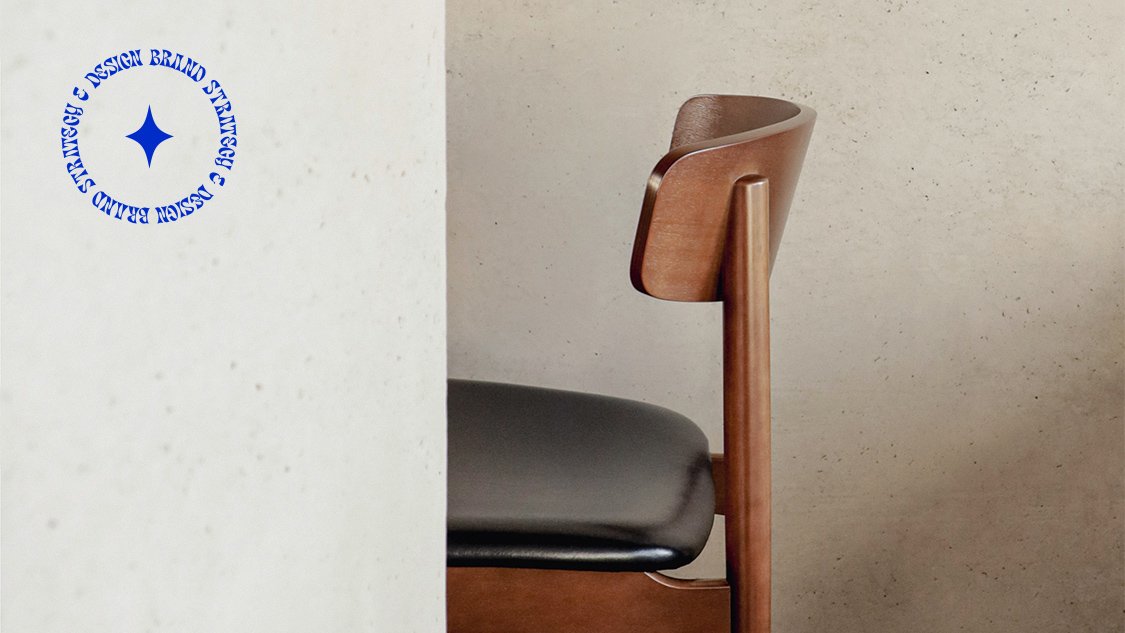This is the one thing you shouldn’t cut in your 2023 marketing budget
Welcome, 2023! We’re so glad that you’ve come… in the midst of a recession, labor shortage, chaotic supply chain disruptions, and ongoing restrictions due to the pandemic. While I’m personally glad to see 2022 come and go, the new year has been one that has rung in a lot of uncertainty. When I look around, I see all my colleagues on LinkedIn posting #OpenToWork, as countless companies lay off people in an effort to cut costs, preserve revenue, and protect shareholder interests.
Next year probably looks the same to you in your small business. From supply chain disruptions causing you to pivot your product offerings to skyrocketing inflation impacting your bottom line, small businesses are looking at the current economic environment and worrying how they can stay afloat during these uncertain times. While you are looking at your budgets (because, let's be real, we all are), your marketing budget—more specifically, your branding budget—ought to be continually invested into.
Let's dive into three reasons why your branding budget is still a critical investment to make even in tough times and a few surprising ways to save money in your business.
1. Your branding budget is an investment into clarity for your business and your employees
Cutting your branding budget, especially when you’ve not initially put the time and effort into a brand, will heavily affect the amount of clarity in your business. Your brand is the cornerstone of your business. It's not just about your logo and colors: it drives everything from operations, product development, marketing, and even human resources.
Branding allows you to define your vision and mission for your business, allowing you to make smarter and faster decisions on everything within it.
Your brand also includes your customer persona, which is something that you’ll constantly come back to time and time again to say, “Is what I’m doing truly serving my target audience/client”?
In the past, I used to think that branding is at the top of a small business owner’s Maslow’s hierarchy of needs. Once a business is able to fulfill its core needs (ie. get sales, have cash flow, pay its employees, etc), only then can it begin thinking about higher level strategy such as branding. However, from serving dozens of small- to medium-sized businesses with brand strategy through our work here at Author, I’ve learned that branding is actually a top-down/waterfall approach. The source of all your business activities has to come from branding. Once you pin down your brand strategy, every other business function begins to cascade from there.
Once you pin down your brand strategy, every other business function begins to cascade from there.
While these two approaches mentioned above may seem at odds with each other, it is possible to pursue a branding strategy. While this may sound daunting, especially if a thorough branding strategy is beyond your means right now, saving up for this kind of investment will be well worth it in the end. But also keep in mind that any thought you put into branding strategy, no matter how small, will still be a step in the right direction. Though your business will see the maximum results from implementing a branding strategy sooner than later, there are numerous resources and ways for even the smallest of startups to begin strategizing their business's brand at almost any price point.
2. Cutting your branding budget can restrict new growth opportunities
In challenging times like these, most business leaders impulsively trim their budgets in an attempt to “cut costs while maintaining the same amount of operations”. This is a common phrase you’ll hear over and over as a recommendation from consulting groups and executive level leadership. Instead, I want to challenge that thought and say that hard times are an opportunity for business owners to become innovative and creative. Instead of posing the question, “How can I reduce costs to maintain what I’m currently doing?”, you should ask, “Where can I expand my business so that I can maintain sales?”.
Hard times are an opportunity for business owners to become innovative and creative.
I get it: in the face of an economic downturn, this can sound absurd. But isn't the freedom to be nimble and change strategy at a moment's notice due to changing economic winds one of the benefits of being a business owner—or perhaps even why you started your own business in the first place? Feeling like your business needs to move in a different direction? Change it! A brand strategy helps you see your business from outside the box and uncovers new perspectives on shaping the direction of your business so you can grow and adapt with the changing times—all while staying true to your original intentions with your business. By seeing branding strategy as a "want-to-have" and not a "need-to-have" during hard times, you limit yourself to only operating in the specific space or realm that you’re working in when in fact, that space might not be the area that you should be operating in at this point in time.
It's not all doom and gloom: an encouraging sign is that job creation is still happening. So in the middle of an economic downturn, this means that consumer demand is still there, it’s just coming down to people spending more wisely and deciding what spending is most important to them (and what isn't) for the time being. Which brings us to our next point:
3. Cutting your branding budget might actually lower the perceived value of your products or services
By slashing your branding budget, you can actually risk falling behind other companies who compete in your space. This means that while your products might be the greatest in the world, they may be deemed less valuable by your customers either because your competitors have built a deeper connection with the audience or the time and investment they've put into their branding strategy has grown their brand's recognition.. Many, if not all, of us small business owners have had to start our company with a "Git 'Er Done" mentality and just present an offering to the market with little or no thought to the brand strategy behind it. But the more your brand speaks to the core needs and desires of your customer, the more value they perceive your product or service has to offer them. In turn, this moves your offering in their minds from a "want-to-have" to a "need-to-have" budget item, because it serves a need they're experiencing at just the right time.
The more your brand speaks to the core needs and desires of your customer, the more value they perceive your product or service has to offer them.
In fact, how many times have you looked at something and said, “This purchase is important to me, so I'm willing to make room for it in my own spending”? That’s the power of branding. While a product provides value by solving a problem, a brand addresses a deep core need of the customer. This isn't about emotionally manipulating your customers into perceiving their wants as needs. It's about an intensive branding self-discovery process that reveals exactly what role your product or service plays in the psychology of your customer and how your offering truly and authentically meets one of their core needs. It's not about chasing a sale that your customer will have buyer remorse for the minute they're handed the receipt (which tarnishes your brand's reputation): it's about seeking to deeply understand what's most important to them and showing up at the right time to serve that need.
So for those of you who (like me) prefer hard numbers over emotions, this translates to increased sales that make both you AND your customers feel good about the purchase. This also means that, with a strong brand strategy in place that outlines how your product or service fills your customers' specific needs, you can justify raising your prices even in spite of difficult times because the more your offering truly solves a need, the more its perceived—and actual—value to the customer increases.
Three surprising ways to cut business costs in 2023
I hope this post has provided clarity on why branding is a vital cornerstone of your business budget! But let's be honest: at the end of the day, some costs still may need to be cut. As a fellow business owner, here are three surprising tactics I've been implementing that may help you, too, cut costs and keep your business afloat in the next few months:
Before you let go of your employees or contractors, think about personally taking a pay cut for a certain amount of time to keep the business going. I know many people may not be in a position to be able to take this route, but I heard many business leaders during the pandemic chose to stop paying themselves and instead pay their employees to keep the operations going. This route, while never ideal, shows servant leadership and tells your employees that you are taking care of them first. I’m also a personal fan of the Dave Ramsey methodology, which teaches that both your business AND your personal accounts need to have a 6-month emergency fund. Shockingly enough, most emergencies only last for a few months before your reserves are truly depleted, but an emergency fund gives you the peace of mind that you can pivot and turn things around in time while still covering your essential expenses.
Review what subscriptions you have in your business. Just as we do in our personal lives, our business can sign up for so many different monthly subscriptions that, when added up, can amount to a huge sum of money. Look through each of those subscriptions and not only ask if they’re still bringing value to your business, but if that same product you’re subscribed to can be satisfied by either one of your other existing subscriptions or a lower-priced option. Nitpicking through all this can be difficult and time-consuming, but it’s worth doing it! In fact, in my own business I’ve found a few subscription services that overlapped and have saved money by canceling the ones that were no longer needed.
Find ways to automate repetitive tasks. This is one of the largest sources of waste in a business. Look into your standard operating procedures and see if there are places where some kind of workflow automation can streamline daily repetitive tasks. By doing so, you might actually free up time for you or your employees to do more selling or other value-driven activities that result in more profitability for your company!
To sum up, it's important to realize just how powerful of a factor branding is in your business and that prioritizing your branding budget can actually yield a significant return on your investment in the long run. If you want to grow your business and your brand this year, even in spite of a recession, we'd love to help. Our brand strategy and design packages provide branding solutions at nearly any price point so you can achieve clarity, find peace in troubled times, and most of all, grow and scale your business no matter the times we find ourselves in. Schedule a completely free consultation call today:






